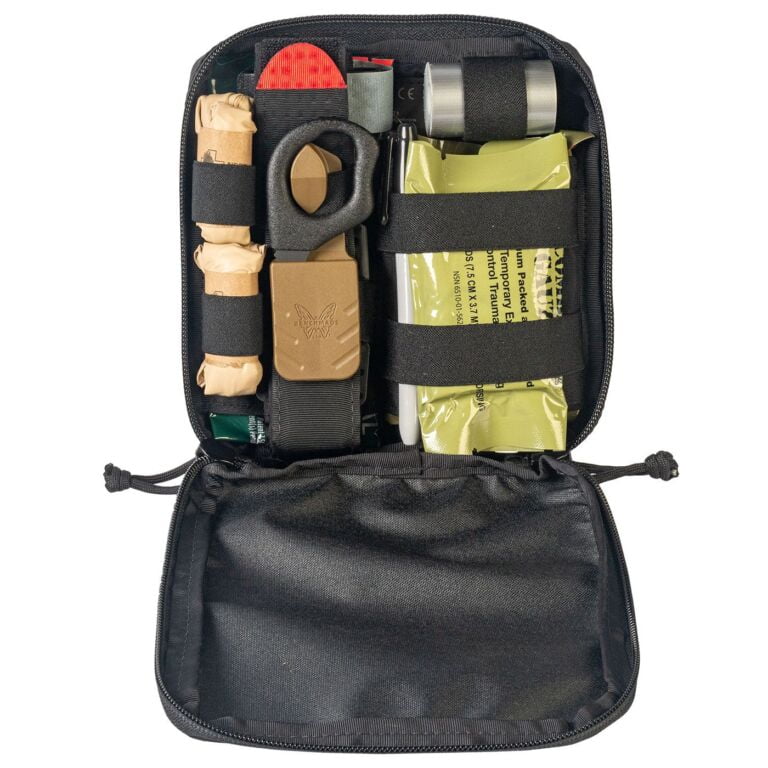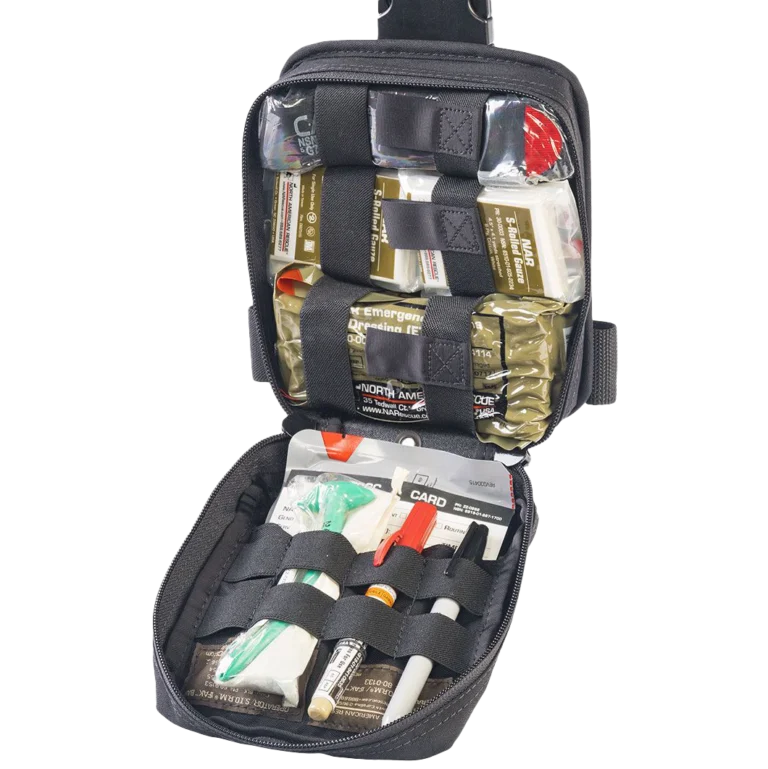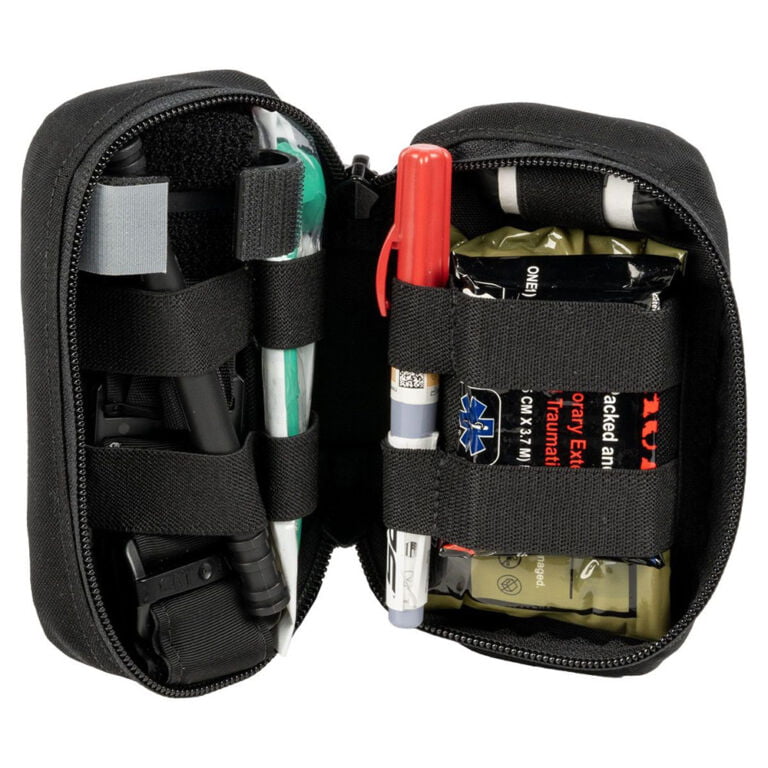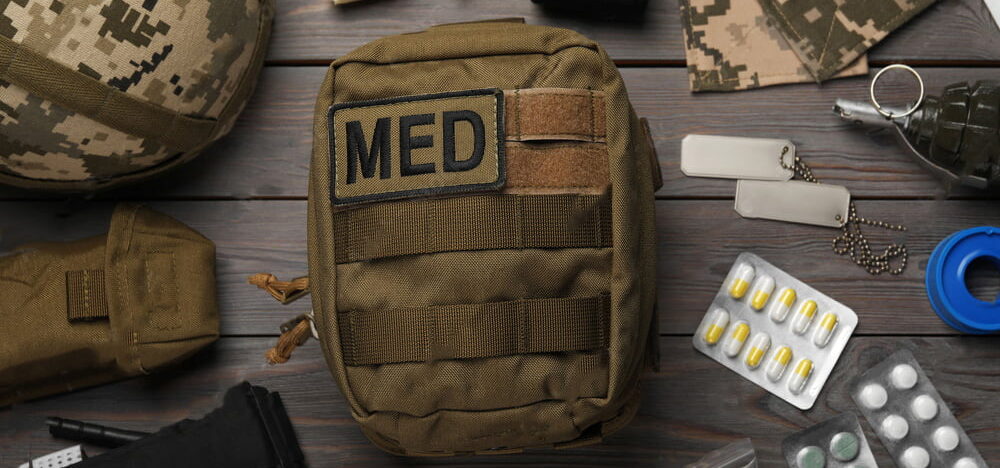Tactical First Aid Kits: Decoding IFAK, AFAK, and MFAK
The strategic benefits of tactical first aid kits such as IFAKs, AFAKs, and MFAKs indisputably supersede those of traditional kits. Each kit serves a distinct purpose and carries crucial elements to deal with severe injuries or trauma that could occur in different environments and situations. Here, we detail the essentials of each of these tactical kits.
Breaking Down Tactical Medical Kits: Features and Uses

Individual First Aid Kit (IFAK)
IFAKs are compact, individually-focused kits primarily designed to handle immediate life-threatening injuries, such as severe cuts or gunshot wounds.
Essential components in an IFAK:
- Heavy-duty, preferably sterile, gloves
- Tourniquet
- Bandage
- Trauma Shears
- Waterproof medical tape
- Chest seals
- Compression gauze
- Hemostatic granule packet
Advanced First Aid Kit (AFAK)
AFAKs progress a step further, providing more comprehensive emergency care. They contain the elements of an IFAK and supplement them with advanced tools, enabling responders to address a broader range of complications.
Essential components in an AFAK:
- EMT shears (5.5”)
- Permanent marker (eg: Sharpie)
- Medical gloves
- Nasopharyngeal airway tube
- Tourniquet
- Vent chest seals
- Compression gauze
- Trauma dressing
- Thermal blanket
- Tactical combat casualty care card


Mini First Aid Kit (M-FAK)
The Mini First Aid Kit, or M-FAK, is a small, easy-to-carry kit designed for quick care during emergencies like cuts, blasts, or injuries from accidents. Despite its small size, it doesn’t skimp on essentials. It comes packed with all the necessary medical tools and supplies, ready to help first responders and anyone else in urgent situations.
Essential components in an MFAK:
- Tourniquet
- Vent chest seals
- Medical Gloves
- Hemostatic Gauze
- Emergency Trauma Dressing
Making the Right Choice: Comparing IFAK, AFAK, and MFAK
Selecting a suitable tactical first aid kit relies on understanding the application and unique offerings of each kit type. Here’s a comparative table to facilitate this decision:
| TYPE | SIZE | PURPOSE | COMPONENTS | IDEAL USER |
|---|---|---|---|---|
| IFAK | Compact | To address immediate, life-threatening injuries | Includes tourniquet, bandage, trauma shears, medical tape, chest seals, compression gauze, etc | Individuals operating in risky scenarios |
| AFAK | Slightly Larger | Comprehensive, immediate provision of emergency care | All components of IFAK, plus EMT shears, airway tube, vent chest seals, trauma dressing, etc | Prepared individuals or those with specific needs |
| MFAK | Extremely Compact | Critical care for traumatic injuries in the smallest package | Equipped with essential medical supplies, with options for Basic, Basic with hemostatic gauze, Advanced | First Responders, individuals in tactical operational settings |
Whether you take part in strenuous outdoor activities or operate within hazardous environments, making the choice to equip yourself with a tactical first aid kit could make a significant difference, potentially saving lives when emergencies strike.
KEY TAKEAWAY
Regardless of your activity level or profession, choosing the right tactical first aid kit—be it an IFAK, AFAK, or MFAK—can significantly impact your ability to respond effectively in emergencies. Understanding the differences and knowing what each kit offers helps ensure you and those around you have the best chance of receiving immediate, life-saving care when it matters most.

